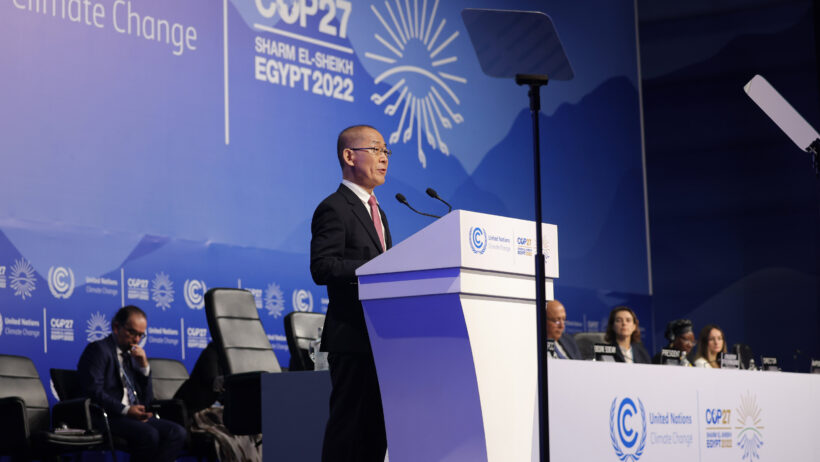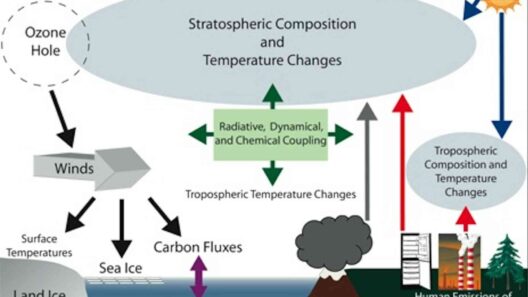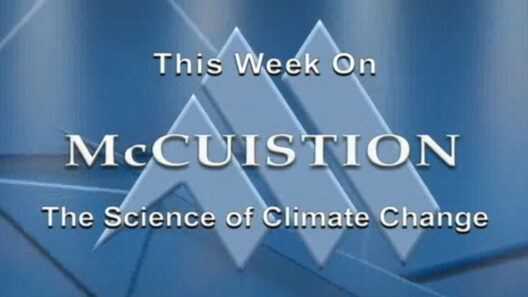The United States is at a crucial juncture in its climate consciousness, a state where muscular action is necessary yet currently shrouded in indecision. Global warming poses severe risks, and the question arises: Are we truly prepared to confront this existential threat? As the specter of ecological collapse looms ever larger, it becomes pertinent to ponder our readiness, not just on a political or economic scale, but also in the context of collective mental and social preparedness.
Recent evidence indicates that the planet may soon breach critical thresholds of warming, compelling a reevaluation of our priorities. One might ask, are the citizens of this nation—as well as their leaders—adequately informed and inspired to make the sacrifices required to avert catastrophe? With dire predictions permeating the discourse around climate change, a spectrum of emotions arises: anxiety, denial, hope. Each emotion plays a role in shaping public perception and response, thus influencing our trajectory.
The initial challenge in addressing climate change is education. Environmental literacy is paramount. Yet, the paradox exists; while information is more accessible than ever, a significant portion of the population remains uninformed or misinformed about the nuances of climate science. Misleading narratives and politicization of climate issues can dilute the urgency of the matter. Increasing the general populace’s understanding is not merely an academic endeavor but a moral imperative. Is it possible to galvanize public interest through immersive experiences such as interactive installations or community-led workshops?
Moreover, climate change is not a singular issue but rather a tapestry interwoven with threads of social justice, economic stability, and health concerns. Low-income communities and marginalized groups often bear the brunt of environmental degradation, facing higher exposure to pollution and less access to resources for mitigation. In this context, the battle against global warming must also be a battle for equity. Are we willing to face the truth that climate change disproportionately affects those already disenfranchised? If we are to answer in the affirmative, it necessitates a paradigm shift in advocacy—from one of mere awareness to one of action informed by empathy.
We must also consider the role of policy. To what extent do U.S. lawmakers reflect the urgency of climate issues in their legislative agendas? Although there are glimmers of hope—such as the advent of the Green New Deal—many proposals remain mired in discussion without substantive action. With lobbyists from fossil fuel industries wielding immense influence, can we realistically expect robust countermeasures to emerge from a system fraught with contradictions? The pressing question becomes: how can citizens leverage democracy to elevate climate action in political dialogues?
Another pivotal facet is technological advancement. Innovations in renewables, carbon capture, and sustainable agriculture present opportunities for a transitional economy that not only pauses the trajectory of global warming but actively seeks to reverse it. Nevertheless, challenges persist in terms of scaling these technologies for widespread use. Herein lies a playful yet vital inquiry: what if we, as a society, redefined innovation not merely in economic terms but as an exercise of collective imagination? Could we catalyze a new wave of climate-conscious entrepreneurs who prioritize sustainability over profit without compromising economic viability?
On the communal level, grassroots movements have emerged as potent forces for change. Local initiatives often yield results faster than national policy debates can. Community gardens, solar co-ops, and educational programs have proliferated, illustrating that resilience often starts small. Yet, how do we foster interconnectedness among these disparate local efforts to construct a linchpin of national environmental activism? Herein lies a challenge: can we design platforms or networks that facilitate collaboration rather than competition, bringing disparate locales into harmonious alliance?
Social media has become a double-edged sword in the climate discourse. On one hand, it serves as a powerful medium for spreading awareness; on the other, it propagates fear and misinformation. With all the noise online, how do we foster constructive dialogue while combating despair? The task is monumental yet essential: creating a social media culture that empowers rather than paralyzes its users. Activists must strive to cultivate online spaces that facilitate dialogue, invite diverse perspectives, and promote solutions rather than stagnation.
Moreover, the art of storytelling must retain its prominence in climate action. Scientific reports, while laden with essential data, often fail to resonate emotionally with the general populace. Narratives that weave personal testimonials with empirical evidence can have transformative effects. Can we create a compelling narrative that connects the dots between individual actions and global consequences? By framing climate change as a collective story rather than a series of isolated incidents, we can evoke the urgency and importance for continued engagement.
Finally, a sense of hope is critical. While existential threats loom large, humanity has historically demonstrated resilience and ingenuity. Acknowledging that we are on the precipice of profound change can inspire proactive rather than reactive measures. In light of that, are U.S. citizens ready to harness their collective will to confront this dilemma? Are we prepared to make the necessary changes in our lifestyles, our policies, and our economies that will dictate the trajectory of our planet?
In conclusion, the urgency to address global warming necessitates not just awareness, but readiness—in knowledge, action, and collaboration. While challenges abound, the potential for adaptive and transformative solutions exists. By facing these challenges head-on, the United States could usher in an era marked by a newfound climate consciousness. The time for contemplation is over; the time for action is now.








